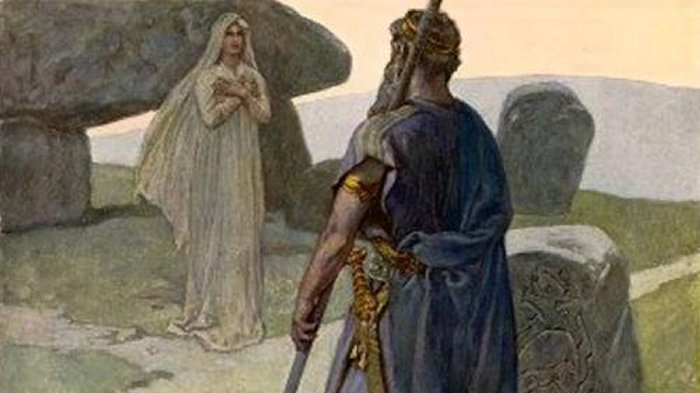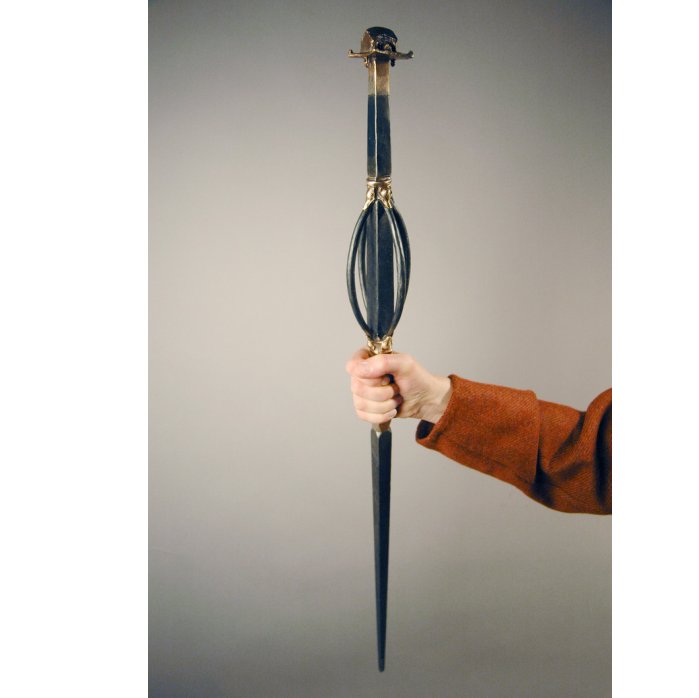Norse Shamanism: A Völva And Her Prophecies Were Feared Among Norse Gods And Vikings
Ellen Lloyd - AncientPages.com - The Völva was a mighty female shaman and seer in Norse mythology.
She held an important place in the ancient Viking society, and her powers were considered so strong that not only Vikings feared her prophecies.
But there were also other Norns, both benevolent and malevolent, who had enough power to reverse a person’s fortune.
Even Odin, the greatest of all Norse gods, consulted her to learn about his future and other divinities.
In Völuspa, Odin offered the völva his necklace and rings as payment for telling him the future. She foretold the creation of the world, the first gods, the first people, and Ragnarök – the end of the world.
What Is Norse Shamanism?
The Völva was considered a Seiðr (sometimes anglicized as seidhr, seidh, seidr, seithr, seith, or seid) is an Old Norse term for a type of sorcery that was practiced in Norse society during the Late Scandinavian Iron Age.
According to Norse mythology, the Norns were shapers of destiny and recorded days in a person's life. They were the foremost masters of seidr.
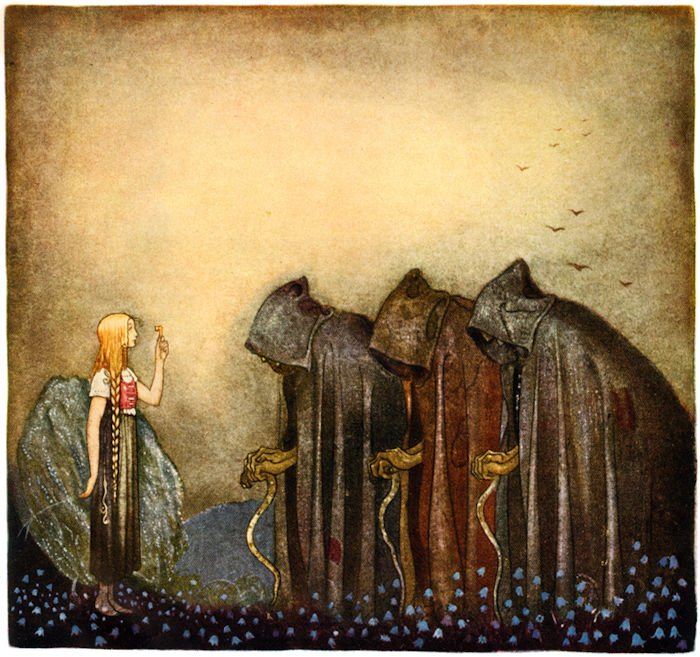 Guldnyckeln by John Bauer (1882–1918). Credit: Public Domain
Guldnyckeln by John Bauer (1882–1918). Credit: Public Domain
A Seiðr could not only foretell the future but also raise storms, journey or battle in animal form, send a nightmare to kill someone by suffocation in his sleep, and cast love spells.
But there were also other Norns, both benevolent and malevolent, who had enough power to reverse a person's fortune.
In his book Viking Way: Religion and War in Late Iron Age Scandinavia, archaeologist Neil Price writes:
"There were seiðr rituals for divination and clairvoyance; for seeking out the hidden, both in the secrets of the mind and in physical locations; for healing the sick; for bringing good luck; for controlling the weather; for calling game animals and fish.
Goddess Freya was the most powerful völva. James Doyle Penrose (1862-1932) - Credit: Public Domain
Importantly, it could also be used for the opposite of these things – to curse an individual or an enterprise; to blight the land and make it barren; to induce illness; to tell false futures and thus to set their recipients on a road to disaster; to injure, maim and kill, in domestic disputes and especially in battle."
The name Völva (vǫlva) is Old Norse and means "wand carrier" or "carrier of a magic staff." In Norse Sagas, a völva is often described as an older woman who appears late at night. She is dressed in a dark foot-length cloak and holds a magical staff in her hand.
In some Norse myths and sagas, it is written that the wand she held had the power of causing forgetfulness in anyone who tapped it three times on the cheek.
Freya: Norse Goddess Who Was The Most Prominent Völva
The art of prophecy was a divine gift that the Norse goddess Freya taught Odin and the Aesir, Norse gods associated with war, magic, and the sky.
In Norse mythology, Freya is a powerful goddess. She belongs to a group of Gods and Goddesses known as the Vanir, associated with nature, wild places and animals, and unseen realms.
Reconstruction of Klinta rod, a völva staff. Photo: Oskar Kullander / SHM
She is considered to be the goddess of Love and Beauty but is also a warrior goddess and one of great wisdom and magic. Freya, who always had a wand in her hand, was the most prominent völva.
A Völva Needed Her Magical Staff To Foretell The Future
The most detailed account of such a woman and her craft comes from The Saga of Erik the Red. In the saga, a Völva comes to a settlement in Greenland to prophesy for the community. The völva wandered from town to town and farm to farm, performing commissioned acts of magic in exchange for room, board, and other forms of compensation.
Archaeologists have discovered ancient artifacts that might be a wand carried by the Norse female shamans.
The most delicate ancient rod - found in a Viking woman's grave on Öland - is stored at the Historical Museum in Sweden.
Finds from a vǫlva's grave in Köpingsvik, Öland. There is an 82 cm long wand of iron with bronze details and a unique model of a house on the top. Image credit: Swedish History Museum in Stockholm.
. The rod is about one meter long and interrupted at one end. It is made of iron with bronze details. A house in miniature crowns a top. Perhaps it is a symbol of Freya's house, "Folkvang." In the tomb, other items showed that the dead woman had a special status. Maybe the deceased woman was a völva.
A völva needed the magical staff to foretell the future. While excavating some ancient graves in Scandinavia, scientists have also discovered traces of cannabis and other drugs most likely used during the rituals.
A völva was just as respected as much as her prophecies were feared. Like many other shamans in ancient cultures, the Norse völva was set apart from her wider society, both in a positive and a negative sense.
Updated on December 22, 2023
Written by Ellen Lloyd – AncientPages.com
Copyright © AncientPages.com All rights reserved. This material may not be published, broadcast, rewritten or redistributed in whole or part without the express written permission of AncientPages.com
More From Ancient Pages
-
 Bizarre Meat-Eating Dinosaur Found In Classic Fossil Site In Egypt’s Sahara Desert
Archaeology | Jun 9, 2022
Bizarre Meat-Eating Dinosaur Found In Classic Fossil Site In Egypt’s Sahara Desert
Archaeology | Jun 9, 2022 -
 How ‘Listening’ To Archaeological Sites Could Shed Light On The Past
Archaeology | Dec 8, 2023
How ‘Listening’ To Archaeological Sites Could Shed Light On The Past
Archaeology | Dec 8, 2023 -
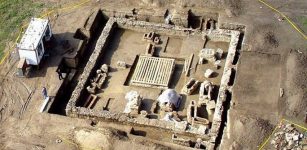 Viminacium Ancient Roman Camp: Sarcophagus With Skeletons, Rich Grave Goods Found In Serbia
Archaeology | Jun 5, 2018
Viminacium Ancient Roman Camp: Sarcophagus With Skeletons, Rich Grave Goods Found In Serbia
Archaeology | Jun 5, 2018 -
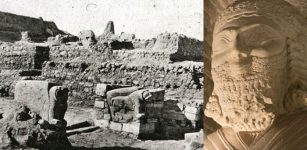 Arslantepe Mound – Home To The Oldest City-State Of Anatolia
Featured Stories | Jun 7, 2022
Arslantepe Mound – Home To The Oldest City-State Of Anatolia
Featured Stories | Jun 7, 2022 -
 Ancient City Of Gordium, Gordian Knot And Skeleton In Tumulus Of King Midas
Civilizations | Sep 20, 2018
Ancient City Of Gordium, Gordian Knot And Skeleton In Tumulus Of King Midas
Civilizations | Sep 20, 2018 -
 Long-Lost Island Documented On Ancient Maps – Erased From History Or Misidentified?
Ancient Mysteries | Dec 14, 2019
Long-Lost Island Documented On Ancient Maps – Erased From History Or Misidentified?
Ancient Mysteries | Dec 14, 2019 -
 Strange Story Of The Viking Who Mysteriously Vanished And Ended Up In America By Mistake – He Was Not Happy About It!
Vikings | Jan 7, 2025
Strange Story Of The Viking Who Mysteriously Vanished And Ended Up In America By Mistake – He Was Not Happy About It!
Vikings | Jan 7, 2025 -
 Ancient Wooden Spade Found Under Melting Ice In Norway – Archaeologists Urge Hikers To Stay Alert
News | Sep 16, 2024
Ancient Wooden Spade Found Under Melting Ice In Norway – Archaeologists Urge Hikers To Stay Alert
News | Sep 16, 2024 -
 Obsidian Flake From 45,000-Year-Old Tool Unearthed In Armenia
Archaeology | Jul 18, 2022
Obsidian Flake From 45,000-Year-Old Tool Unearthed In Armenia
Archaeology | Jul 18, 2022 -
 Ancient Mystery Of The Unknown White Bearded Rulers
Ancient Mysteries | Apr 21, 2020
Ancient Mystery Of The Unknown White Bearded Rulers
Ancient Mysteries | Apr 21, 2020 -
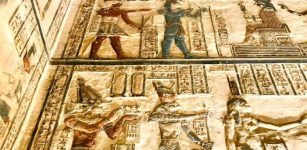 New Images From The Magnificent Dendera Temple Where Restoration Works Continue
News | Mar 15, 2022
New Images From The Magnificent Dendera Temple Where Restoration Works Continue
News | Mar 15, 2022 -
 Who Was King Menes? Mystery Of This Legendary Ruler May Go Back 20,000 Years
Ancient Mysteries | May 1, 2017
Who Was King Menes? Mystery Of This Legendary Ruler May Go Back 20,000 Years
Ancient Mysteries | May 1, 2017 -
 Viking Funeral Traditions: Burning Ships, Complex Ancient Rituals And Incredible Up Helly Aa Festival
Ancient Traditions And Customs | Jan 28, 2017
Viking Funeral Traditions: Burning Ships, Complex Ancient Rituals And Incredible Up Helly Aa Festival
Ancient Traditions And Customs | Jan 28, 2017 -
 Carthage: Prosperous Phoenician Colony That Became Dominant Power In The Western Mediterranean
Featured Stories | May 21, 2020
Carthage: Prosperous Phoenician Colony That Became Dominant Power In The Western Mediterranean
Featured Stories | May 21, 2020 -
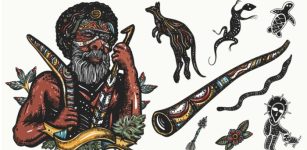 Oral Stories Of Australia’s First Nations Might Be 10,000 Years Old – Evidence Found
Archaeology | Aug 2, 2023
Oral Stories Of Australia’s First Nations Might Be 10,000 Years Old – Evidence Found
Archaeology | Aug 2, 2023 -
 Is This The Face Of A 16th Century Pirate Or Criminal?
Archaeology | Jan 5, 2016
Is This The Face Of A 16th Century Pirate Or Criminal?
Archaeology | Jan 5, 2016 -
 Clay Tablets Reveal Sumerian Doctors Treated Disease With Spells Of Magic And Medicine
Archaeology | Feb 13, 2018
Clay Tablets Reveal Sumerian Doctors Treated Disease With Spells Of Magic And Medicine
Archaeology | Feb 13, 2018 -
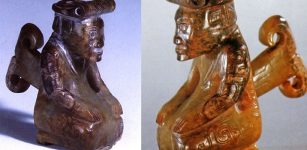 Peculiar Artifact Discovered In Tomb Of The Warrior Queen Fu Hao
Artifacts | Oct 26, 2018
Peculiar Artifact Discovered In Tomb Of The Warrior Queen Fu Hao
Artifacts | Oct 26, 2018 -
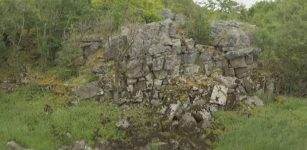 Unique Bronze Age Fortress Discovered In Galway, Ireland
Archaeology | Jun 25, 2022
Unique Bronze Age Fortress Discovered In Galway, Ireland
Archaeology | Jun 25, 2022 -
 Cryptic North American Blythe Intaglios Reveal The Creator Of Life: Who Was This Unknown Being?
Featured Stories | Aug 23, 2014
Cryptic North American Blythe Intaglios Reveal The Creator Of Life: Who Was This Unknown Being?
Featured Stories | Aug 23, 2014

